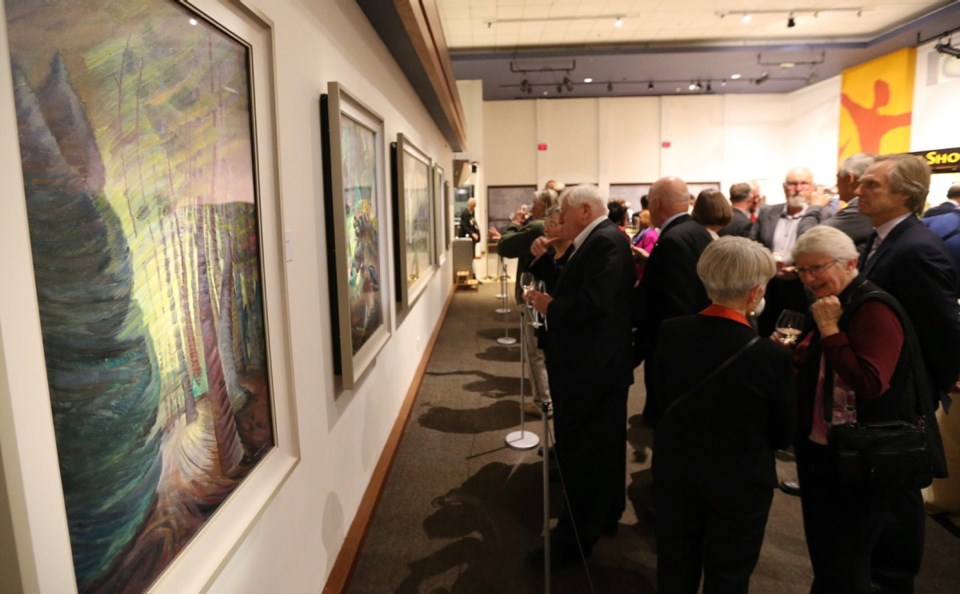The Royal B.C. Museum is revving up for a $10-million renovation to showcase some of 1,100 Emily Carr works now in storage, refurbish its 1970s-era First Peoples Gallery and create a new Pacific Worlds Gallery and learning centre.
Twelve architects toured the museum last week in order to apply to be architect of record for the undertaking, with a deadline of Jan. 13 for their proposals. Funding for the work has not been secured.
The work will be done within the existing building. The site was rezoned in 2011, and plans were unveiled that called for demolition of the 14-storey museum and archives building, and construction of two towers of 12 and 14 storeys.
No such buildings or demolitions are under discussion for the foreseeable future, said chief operating officer Angela Williams.
The renovation in the works will offer more amenities and more First Nations perspectives, she said.
The top priority is a gallery devoted to the world’s largest collection of Carr works, much of it in storage since the artist’s death in 1945. Those include sculptures, sketches, notebooks and textiles as well as paintings obtained when the museum merged with the B.C. Archives in 2003.
“It’s about time,” Williams said. The Carr gallery will take over 2,152 square feet in what is now the gift shop area.
A new 4,400-square-foot Pacific Worlds Gallery will address First Nations cultural treasures, with an emphasis on B.C.’s connections to the Pacific, its peoples, landscape and natural history.
On the third floor, upgrading of the First Peoples dioramas and displays is essential because they date from the 1970s and tell their stories from a colonial perspective, Williams said.
The museum is “working diligently” with First Nations to include modern perspectives on their societies and cultures, including the repatriation of priceless artifacts from museums elsewhere.
“These are cultures that have been here for 10,000 years and are still here,” she said, and they have stories that deserve to be told in the modern context as well as the historical one.
The museum does not have a dedicated learning centre, despite visits by 35,000 schoolchildren in the past year, Williams said. As a result, a 5,200-square-foot centre with high-tech connections will replace what is now a storage area near the food trucks, on the north side of the main floor.
The breezeway on the side of the museum closest to Belleville Street will be enclosed in glass.
The revamp has been in the works for several years, but has yet to receive confirmation of funding from the provincial or federal governments, Williams said.
The province provided an operating grant of $11.8 million in the past fiscal year.
A fundraising campaign is expected to be started in the spring, she said, and some of the cost of the renovations might be covered through the museum’s foundation.
Soon after Jack Lohman took over as CEO in March 2012, he told the Times Colonist that the RBCM needed “a bit of magic” to take people’s breath away when they enter.
“You think you’re in a hospital or a school or something,” he said.
Lohman said in a statement that he envisages “a dramatic reconfiguration of much of our public space, showcasing some of the most precious treasures of the seven million in our collection.”
The museum drew 792,000 visitors, in total, including about 300,000 Imax patrons in 2015-16.
The $10-million renovation will be just the first of five phases of redevelopment on the site in a 25-year project called Treasures for Generations.
The work will not include the massive B.C. Archives, connected to the museum by an underground passage.
It has an 80 per cent rating for protecting items from potential damage. The archives will not be rated 100 per cent until there is a new collections and research building “to address the major earthquake and flooding risks, and provide environmental conditions that meet international standards,” notes the RBCM’s 2015-16 service plan.



